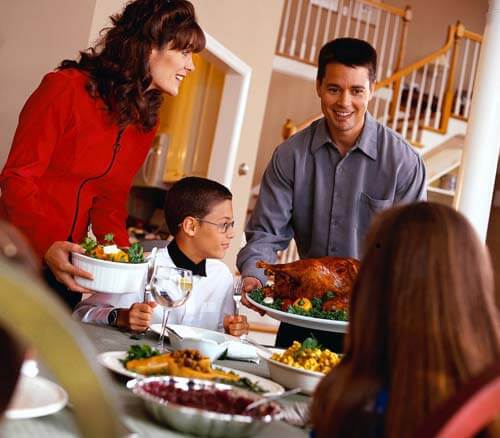(StatePoint) Great food is the centerpiece of any holiday celebration, and practicing safe food handling in the kitchen is an important part of holiday meal preparation. There are certain steps you can take to keep friends and family safe from food poisoning.
“The kitchen can be chaotic and it can be challenging to keep food safety top of mind when dealing with a whole holiday meal, from turkey to trimmings,” cautions Shelley Feist, executive director of the non-profit Partnership for Food Safety Education.
According to the U.S. Centers for Disease Control and Prevention, one in six Americans will get sick from dangerous foodborne bacteria this year. But these crucial safety tips can help you create a safe and tasty holiday celebration:
Clean
Prevent the spread of bacteria by keeping a clean kitchen and washing hands.
Cutting boards, dishes, utensils and counter tops should be washed with hot water and soap after preparing each food item, and before going on to the next. Keep plenty of clean cloth towels or paper towels handy for cleaning surfaces and drying hands.
Enforce a strict hand washing policy for all holiday kitchen helpers. Use warm water and soap for 20 seconds before and after handling food.
Rinse fresh fruits and vegetables under running tap water just before eating or preparing. Rub firm-skinned produce under running tap water or scrub with a clean vegetable brush while rinsing with running tap water.
Separate
Cross-contamination is how bacteria spread. Keep raw meat, poultry, seafood and eggs and their juices away from ready-to-eat foods, like salad ingredients. Using separate cutting boards is one way to reduce opportunities for cross-contamination.
Cook
Temperature matters! Bacteria can survive if foods aren’t cooked to a safe internal temperature. Even an experienced cook cant tell if food is cooked safely by how it looks, so use a food thermometer to ensure you’re cooking turkeys, ham, egg dishes and other foods to a safe internal temperature. Download a temperature chart at www.holidayfoodsafety.org.
Chill
The holiday celebration is great — and even better if you have delicious leftovers. Just remember to enjoy them within four days.
Bacteria spread fastest at temperatures between 40 and 140 degrees Fahrenheit, so chill food promptly — within two hours — at a refrigerator temperature of 40 degrees or below. Appliance thermometers are inexpensive and can help you monitor your refrigerator’s temperature.
Bring on the Bird
Learning how to cook a turkey safely may be one of the biggest holiday meal challenges. Never thaw your turkey on the counter. Turkeys are best thawed in the fridge. So allot plenty of real estate to your turkey before your celebration. If you’re going to stuff your turkey, stuff safely. Cook stuffing to a minimum temperature of 165 degrees, whether inside or outside of the bird. Visit www.Holidayfoodsafety.org, for a complete guide to the safe handling, preparation, serving, and leftover storage of your holiday turkey. You’ll also find guidelines on turkey size, how to thaw a turkey and cooking times.
By taking precautions to prepare food safely, you can ensure that bacteria won’t be guests at your holiday celebration.


























